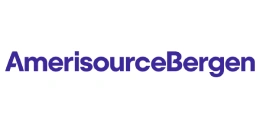Aloe Vera Processing Cost Model: Aloe Economics
_11zon.webp)
What is Aloe Vera?
Aloe vera is a perennial fleshy succulent plant of the species Aloe barbadensis miller, grown worldwide for its nutritional, medicinal, and cosmetic benefits. It has two primary constituents: the transparent inner gel consisting mainly of polysaccharides, vitamins, enzymes, and amino acids; and the yellowish latex, consisting of anthraquinones with powerful laxative properties.
Key Applications Across Industries:
Aloe vera gel is highly prized for its emollient, moisturizing, and healing properties and is a common ingredient in skincare, personal care, and pharmaceutical products. Processed aloe latex is applied in dietary supplements and herbal medicinal products. Aloe vera is also utilized in functional foods, food and beverages, and nutraceuticals for its antioxidant and gastrointestinal health benefits. Its major characteristics are high water content, composition of bioactive compounds, and wide industrial applicability. Processing is through extraction, stabilization, and formulation to provide safety to the product and maintain bioactivity. Strengths are natural origin, consumer faith in herbal medicines, and ability to perform under arid climates with low inputs. Sustainability takes center stage, given aloe vera's drought resistance, encouragement of soil conservation, and support for zero-waste efforts through the utilization of by-products as animal feed, fertilizers, or bioenergy. Prospects continue to look strong based on increasing global demand for herbal products, functional food, and eco-friendly natural ingredients.
What the Expert Says: Market Overview & Growth Drivers
The global aloe vera market size reached USD 890 Million in 2024. According to IMARC Group, the market is projected to reach USD 1,530 Million by 2033, at a projected CAGR of 6.3% during 2025-2033. The aloe vera market is driven by several long-lasting drivers of demand. Increasing consumer preference for plant and natural products forms the foundation for demand in cosmetics, personal care, and pharmaceuticals.
Growing consciousness of aloe vera's health benefits, especially wound healing, skincare, and digestive health, drives usage in nutraceuticals and herbal medicine. Growing worldwide demand for functional foods and dietary supplements has also made aloe vera juice a rapidly growing segment. In food processing and agriculture, aloe vera extracts are increasingly finding application as natural preservatives and bioactive additives. In the future, prospects like organic-certified aloe vera products, aloe vera-based fortification, and innovative extraction methods to achieve enhanced bioactivity will govern the market in the next five years. Competitive strengths are aloe vera's versatility, low inputs in cultivation, and wide consumer acceptance. Weaknesses are sustaining bioactive stability upon processing, variability in quality across supply chains, and adhering to strict international safety norms. From the sustainability aspect, the drought tolerance and potential for valorization of by-products of aloe vera lower its ecological footprint. Responses from the industry involve investments in sustainable cultivation, green packaging, and the incorporation of blockchain traceability technology to guarantee quality and authenticity.
Case Study on Cost Model of Aloe Vera Processing Plant:
Objective
One of our clients reached out to us to conduct a feasibility study for setting up a medium scale aloe vera processing plant.
IMARC Approach: Comprehensive Financial Feasibility
We developed a comprehensive financial model for the setup and operation of a proposed aloe vera processing plant in India. This plant is designed to process 250 tons of aloe vera annually.
Processing Flow: Commercial processing of aloe vera entails formal steps to recover, stabilize, and package products for various industrial uses. Processing starts with cultivation and harvesting of mature aloe vera leaves, which are then shipped to processing plants. The leaves are thoroughly washed to remove dirt and other impurities, then peeled or filleted to break up the outer rind and latex from the inner gel. The gel is homogenized after extraction to create a uniform liquid and then stabilization is performed using cold-processing or pasteurization methods in order to maintain bioactivity and avoid microbial infection. For beverage or juice purposes, the gel is pasteurized, filtered, and mixed with flavoring materials or nutrients. For cosmetic or pharmaceutical purposes, the gel can be dried into powders, concentrated, or mixed with excipients. Aloe latex is tapped and processed into extracts for pharmaceutical use under regulated standards. Quality control tests for purity, pH stability, and microbiological safety, whereas sophisticated testing techniques confirm the polysaccharide and bioactive compound concentration. End products are packaged in bottles, jars, sachets, or bulk packaging based on market destination and shipped to cosmetic, food, nutraceutical, and pharmaceutical markets.
_11zon.webp)
Get a Tailored Feasibility Report for Your Project Request Sample
Raw Material Required:
The basic raw materials required for aloe vera processing include harvested leaves, stabilizers, and additives for final formulations. Key raw materials include:
- Fresh Aloe Vera Leaves
- Preservatives
- Stabilizers
- Herbal Extracts
- Fragrances
- Gelling and Coloring Agents
Machineries Required:
- Leaf Washing Tank / Bubble Washer
- Leaf Cutting / Trimming Machine
- Aloe Vera Leaf Peeling Machine
- Fillet Washer & Sterilizer
- Gel Extraction & Pulping Machine
- Filtration / Decanter Centrifuge
- Mixing Tank with Agitator (Stainless Steel)
- Homogenizer, Pasteurizer (Plate/Tube Type Heat Exchanger)
- Cooling Tank
- Vacuum Evaporator
- Spray Dryer / Freeze Dryer
- Filling Machine, Storage Tank
- Capping / Sealing Machine
- Labelling Machine
- Shrink Wrapping / Carton Packing Machine
- RO Water Treatment Plant
- CIP (Clean-in-Place) System
- Cold Storage Unit
- Material Handling Conveyors
Techno-Commercial Parameter:
- Capital Expenditure (CapEx): Capital spending in an aloe vera processing facility includes agricultural facilities and industrial equipment. Land preparation, irrigation, nurseries, and machinery for harvesting are necessary for cultivation. Processing equipment consists of washing stations, gel extraction and filleting machines, homogenizers, pasteurization or cold-processing units, filtration equipment, and drying machines (for the manufacture of powder). Other equipment for juice blending, oil extraction, and cosmetic-grade preparations might also be on board. Automation of filling, sealing, and packaging modules improves productivity and hygiene levels. Ancillary infrastructure includes cold storage, warehouses, boilers, effluent treatment plants, and renewable energy systems for eco-friendly operation. Microbial and biochemical quality control laboratories for satisfying regulatory requirements are a must. Other investments involve IT-based traceability systems, material handling equipment, and facility layout design. More and more, environmentally friendly packaging technology and waste management units are integrated to lower the environmental footprint. Combined, these investments form a solid foundation for massive-scale aloe vera processing, with compliance, efficiency, and scalability.
- Operating Expenditure (OpEx): Operating cost in aloe vera processing comprises regular expenses in raw material sourcing, utilities, labor, and compliance. Fresh aloe vera leaves account for the biggest cost factor, depending on yield, farming practices, and local availability. Utility expenses encompass electricity and water used in washing, homogenizing, and pasteurizing. Labor costs involve harvesting, processing leaves, quality inspection, and logistics. Maintenance of equipment, spare parts purchases, and calibration of laboratory equipment constitute an important aspect of OpEx. Packaging materials—bottles for drinks or jars and tubes for cosmetics—are a major contributor to OpEx. Logistics, storage, and cold chain management also are significant, particularly for exports. Regulatory compliance, certifications (ISO, GMP, HACCP, organic labeling), audits, and safety testing contribute to ongoing expenses. Branding and marketing investments are necessary for this very competitive market, especially for products that have a direct presence among consumers. Costs related to sustainability, water recycling, use of renewable energy, eco-friendly packaging are now more and more included. Effective management of OpEx depends on tight supply chain integration, lean production systems, and waste valorization in order to keep the company profitable. Furthermore, raw material cost in an aloe vera processing plant ranges between 60-70%, labor cost ranges between 15% to 20%, and all other costs ranges between 10-25% in the proposed plant.
- Profitability Analysis Year on Year Basis: We assisted our client in developing a detailed cost model, which projects steady growth, with revenue rising throughout the projected period. Moreover, gross profit margins lie between a range of 15-25%, and net profit lie between the range of 10-15% during the income projection years, highlighting strong financial viability and profitability.
Conclusion & IMARC's Impact:
Our financial model for the aloe vera processing plant was meticulously developed to meet the client’s objectives, providing an in-depth analysis of production costs, including raw materials, Processing, capital expenditure, and operational expenses. By addressing the specific requirements of processing 250 tons of aloe vera annually, we successfully identified key cost drivers and projected profitability, considering market trends, inflation, and potential fluctuations in raw material prices. This comprehensive financial model equipped the client with valuable insights into strategic decision-making, demonstrating our commitment to delivering high-quality, client-focused solutions that ensure the long-term success of large-scale processing ventures.
Latest News and Developments:
- In June 2025, the Association of Official Analytical Collaboration, a global authority in analytical science, has formally certified Herbalife Ltd.'s proprietary method for identifying and measuring anthraquinones, also known as aloins, in aloe vera. Herbalife is a health and wellness company, community, and platform. To comply with safety regulations, aloe regulatory organisations mandate that manufacturers of consumable aloe vera products keep an eye on naturally occurring substances such aloin A, aloin B, and aloe-emodin.
- In January 2025, Dusky India has introduced two new face gel varieties enhanced with the amazing health benefits of aloe vera. Aloe Vera, which is well-known for its moisturising and antioxidant-rich qualities, is the main ingredient in these skincare innovations that are made to work with all skin types and encourage youthful, glowing skin.
- In December 2024, Aloecorp Inc., a multinational aloe vera corporation, has purchased Pharmachem's aloe vera section. Aloecorp now has a new processing plant as a result of the acquisition, making it its third Mexican production site.
Why Choose IMARC:
IMARC's Financial Model Expertise: Helping Our Clients Explore Industry Economics
IMARC is a global market research company that offers a wide range of services, including market entry and expansion, market entry and opportunity assessment, competitive intelligence and benchmarking, procurement research, pricing and cost research, regulatory approvals and licensing, factory setup, factory auditing, company incorporation, incubation services, recruitment services, and marketing and sales.
Under our factory setup services, we assist our clients in exploring the feasibility of their plants by providing comprehensive financial modeling. Additionally, we offer end-to-end consultation for setting up a plant in India or abroad. Our financial modeling includes an analysis of capital expenditure (CapEx) required to establish the processing facility, covering costs such as land acquisition, building infrastructure, purchasing high-tech production equipment, and installation. Furthermore, the layout and design of the factory significantly influence operational efficiency, energy consumption, and labor productivity, all of which impact long-term operational expenditure (OpEx). So, every parameter is covered in the analysis.
At IMARC, we leverage our comprehensive market research expertise to support companies in every aspect of their business journey, from market entry and expansion to operational efficiency and innovation. By integrating our factory setup services with our deep knowledge of industry dynamics, we empower our clients to not only establish processing facilities but also strategically position themselves in highly competitive markets. Our financial modeling and end-to-end consultation services ensure that clients can explore the feasibility of their plant setups while also gaining insights into competitors' strategies, technological advancements, and regulatory landscapes. This holistic approach enables our clients to make informed decisions, optimize their operations, and align with sustainable practices, ultimately driving long-term success and growth.
Our Clients
Contact Us
Have a question or need assistance?
Please complete the form with your inquiry or reach out to us at
Phone Number
+91-120-433-0800+1-201-971-6302
+44-753-714-6104










